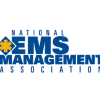Updated March 2, 2015
The younger among us may groan about “PowerPointless” lectures as the ubiquitous program enters its third decade, but it remains the Godzilla of communications, with an estimated 30 million presentations created every day worldwide. So why not embrace it and simply do it better?
A few reminders about using PowerPoint for EMS education and training:
1. Avoid the I don’t need to learn new tricks trap.
Don’t stay stuck in the same rutted approach. Spend time looking at effective presentations, which are as easy to find as singing cats on YouTube. Also try out the new software tools (like animation) that turn drab into dazzling.
2. Remember that art matters.
Show, don’t tell: Use images to literally illustrate points. Don’t use your presentation as your speech or a memory crutch; use it to help you tell your story and emphasize key messages.
3. Be a Steve Jobs clone.
The legendary Jobs was famous for his Zenlike approach. If you want to channel this icon, recall his constant preparation and practice with presentations, like an ice skater practicing a jump 1,000 times so that, come showtime, it looks effortless.
4. Know your stuff.
Don’t hide behind the curtain of technology to mask a poorly prepared presentation. Sharpen your skills, keep the conference room lights on, face the audience, and know your stuff backward and forward.
5. Accept that less is more.
Cut down on the number of slides - and the number of words per slide. The average is 40; the goal is six! But you can’t deliver a fortune cookie’s worth of information and expect your audience to get it. Talk them through. Slides are the bricks; you are the mortar. Build something great.
What are your PowerPoint tips for EMS educators and managers?











